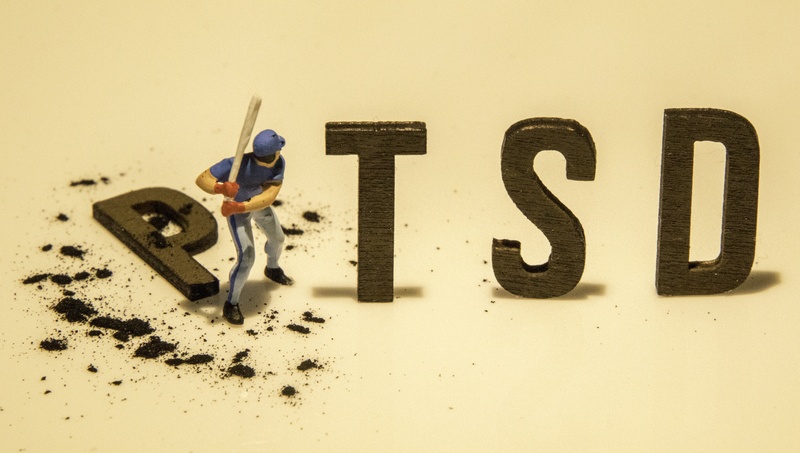Post Traumatic Stress Disorder (PTSD): Recognizing the Symptoms

Over the last several years, both Canada and the U.S. have suffered enormous tragedies that will forever be etched in our minds and in our hearts. From the recent northern B.C. murders to the numerous mass shootings in the U.S. to the Humboldt Broncos bus tragedy, all of these events have caused many to experience emotional pain, and for some, more serious forms of psychological trauma otherwise known as Post Traumatic Stress Disorder (PTSD).
What is Post Traumatic Stress Disorder (PTSD)?

Post Traumatic Stress Disorder is a condition that results from being exposed to trauma. It may involve extreme cases such as death or the threat of death, serious injury, assault, or violence, but it can result from any situation that causes a person extreme emotional distress. (1)
While it’s considered ‘normal’ to have emotional feelings such as anger, sadness or even being scared after a traumatic event, feeling the emotional impact of having a physical response to a situation for more than a month could indicate PTSD. (1)
According to Psychology Today, less than 20 percent of individuals who are exposed to traumatic events will actually develop PTSD. However, many victims will still experience anxiety and pain which can interfere with the quality of their daily life. (2)
Data supports that men tend to experience traumatic events more frequently than women; however, women are at a higher risk of developing PTSD. (3)
How Does PTSD Impact a Person?

The effects of PTSD can vary from person-to-person, but typically those who suffer from PTSD will experience difficulties at work and in their relationships with friends and family. In an effort to block out the painful memories, a person suffering from PTSD will often seem distant and disengaged.
PTSD sufferers may also experience or develop other mental health issues at the same time. Up to 80 percent of individuals suffering from long-standing PTSD develop depression, anxiety, substance abuse or addictive behaviors. These may have developed directly in response to the traumatic event or can develop sometime after the onset of PTSD. (4)
When Do PTSD Symptoms Typically Develop?

PTSD symptoms can develop immediately after a terrifying situation (such as a car accident) or months to years after an event was experienced (such as sexual abuse in childhood). Sounds, smells, images, and thoughts can all be PTSD triggers that bring a person back to a vivid memory or feeling of a traumatic event and causes them to relive the experience.
On the contrary, some people who experience severe traumas don’t develop PTSD symptoms at all.
What Are the Symptoms of PTSD?
- Panic Attacks – A sudden fear comes over a person with no warning and for no particular reason. Often, when a person is reminded of the traumatic event, they will suffer from a panic attack. Attacks can last anywhere from five to 20 minutes, but in severe cases, they can last as long as a few hours. The peak of anxiety occurs about ten minutes after an attack starts. (6)
- Nightmares or disturbing dreams – PTSD can cause a person to have frequent nightmares, which means replaying the traumatic event over and over again while he/she sleeps. These disturbing dreams often result in the person moving non-stop in his/her sleep and sometimes shouting out loud. (7)
- Depression – Depression is common amongst sufferers of PTSD – it causes the person to feel negative and sad all the time. Depression often causes a person to withdraw from interests and activities once enjoyed. (8)
- Thoughts of suicide – When a person ideates constantly about killing themselves, he/she may be suicidal. Research shows that women try suicide more often than men, however, men are more likely to die from a suicide attempt. (9)
- Developing mistrust or paranoia – PTSD can cause a person to feel paranoid and suspicious all the time. This paranoia causes him/her to always mistrust and is suspicious of others. (10)
In addition to the above-mentioned symptoms of PTSD, many individuals also will experience major behavioral changes that affect their relationships, self-esteem, work performance, lifestyle and ability to cope with day-to-day life. With the latter, this is when those who are suffering are more likely to turn to drugs and alcohol as a form of escape or to manage their emotions.
Complex PTSD vs PTSD: What’s the Difference?

Complex PTSD (C-PTSD) is considered an anxiety disorder, while PTSD is generally recognized as tied to a specific event. C-PTSD shares many of the same symptoms as PTSD, however, there are three symptoms exclusive to C-PTSD: (5)
1. Problems with emotional regulation – Those with C-PTSD tend to lack emotional sensitivity and they often have the inability to respond appropriately to certain situations.
2. Problems with interpersonal relationships and negative self-concept – Those with C-PTSD struggle feeling connected to other people; in fact, they often feel disconnected and distant, making it difficult to maintain close relationships with friends, family, and colleagues.
3. Negative Self-Concept – Those with C-PTSD may suffer from low self-esteem and low self-worth, often feeling helpless and full of shame and guilt.
For individuals who have experienced a traumatic event, it’s important to understand the symptoms of PTSD so that you can seek treatment and adopt healthy coping mechanisms that help bring the mind, body, and spirit back into balance.
For anyone suffering from PTSD or experiencing distressing symptoms after a traumatic event, there is help available. Book a free consultation with us today to discuss natural treatment options for PTSD. Enjoying and maintaining a balanced mind, body, and spirit is possible.
